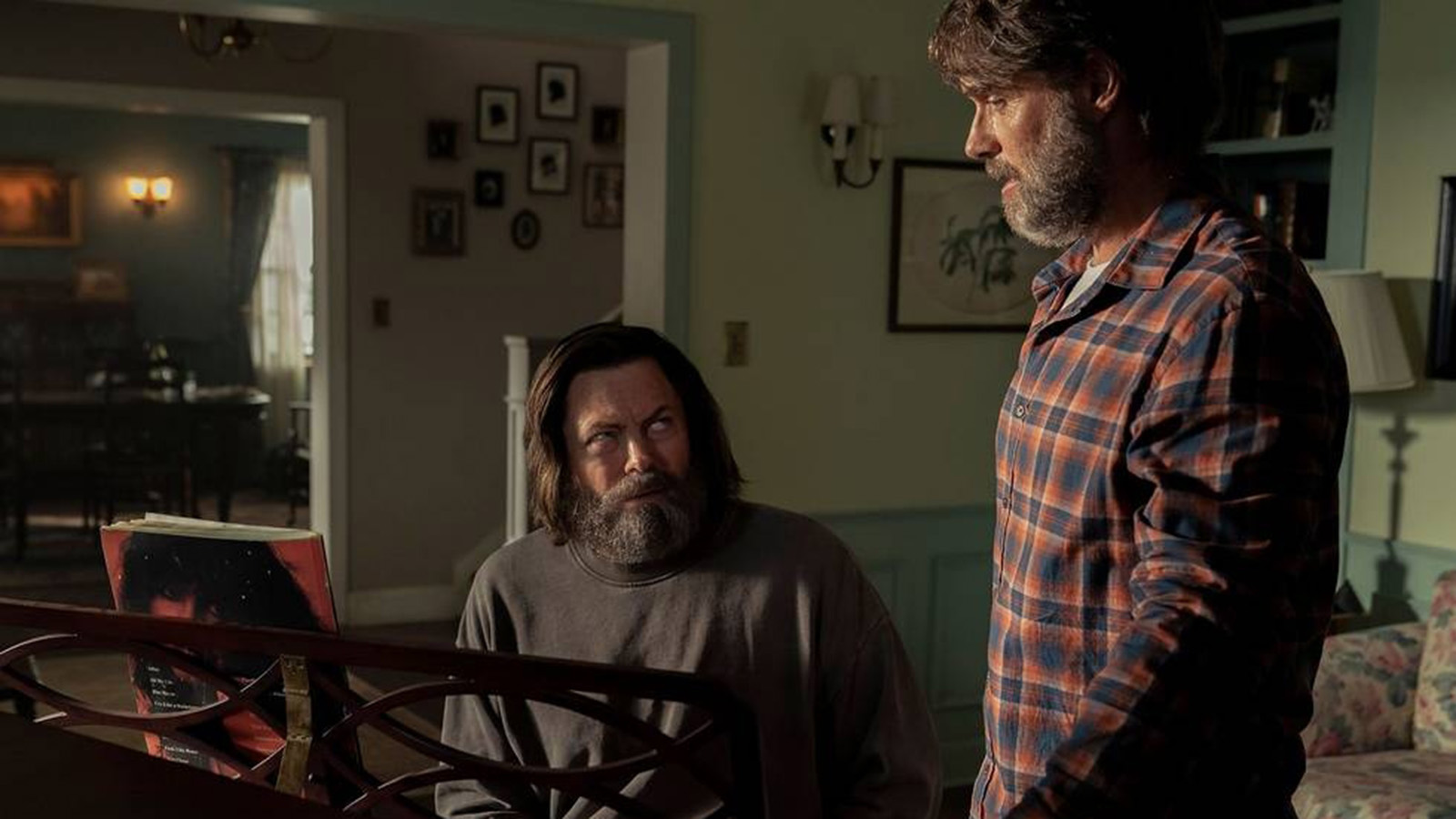
- How did the cinematography evolve the episode from a character study to a visual love letter? Are there specific shots or sequences you remember vividly?
- In what ways did the episode challenge or reinforce your understanding of preparedness, survival, and trust? How does Bill's arc speak to the balance between independence and connection?
- This episode was controversial at the time because of the representation of relationships, what did you think while viewing?
- Did you like the episode? Have you played the games?

1. The cinematography in this episode heavily contributes to the emotional impact. When Frank takes the wine with the pills we watch it in an over-the-shoulder shot, its close-up, and also a two-person shot, showing both Frank and Bill. Choosing the over-the-shoulder part is rather significant because the audience can tell that Bill is watching Frank knowing this will kill him, this makes everything much more real and sorrowful. The closeness of the shot is what brings it together. You can see Frank’s hesitation but at the same time his sureness that this is the right call. Before he drinks it he makes eye contact with Bill, they both know this is their last moment together and we can see the sadness on Franks's face to give up his life with Bill.
ReplyDelete2.In The Last of Us, it is normal to kill without thinking or hesitation, whether it be a zombie or a human. You have to think about yourself because it is not easy to survive in this world and one wrong decision may cost you your life.
3.
In this new world, it is common for people to be extremely defensive, protective, violent, and wary of others. Bill showcases that when he finds Frank in the hole and even after realizing he is human he still takes precautions (he held a weird thing up to his neck I am not sure what it is). Frank was in a distraught state and even said he hadn't eaten in days but Bill was still hesitant to let Frank into his home and told him to go away. Bill eventually gave in and he and Frank became very close lovers, in one scene Bill stated he was never happy or had a purpose before he met Frank, he was satisfied with his life and they died peacefully together. This relationship emphasizes the importance of connection because it shows how much one person can change and open up if they show a little bit of trust like how Bill did. This connection didn't just bring a happy fulfilling life but also practical things like more resources. It gave Frank a home and while in that home he started to trade with Joel and his friend, Bill would’ve never trusted outsiders without Frank’shelp. They were able to access materials they would've never had before.
4.I loved this show and watched it when it first came out. From my knowledge, it's based on a video game but I never played it after watching the show it made me want to play. I remember this episode vividly because it was so touching and sad, even though I had already watched it and knew what would happen I had to hold back my tears in class. I think any show that can invoke such feelings is amazing.